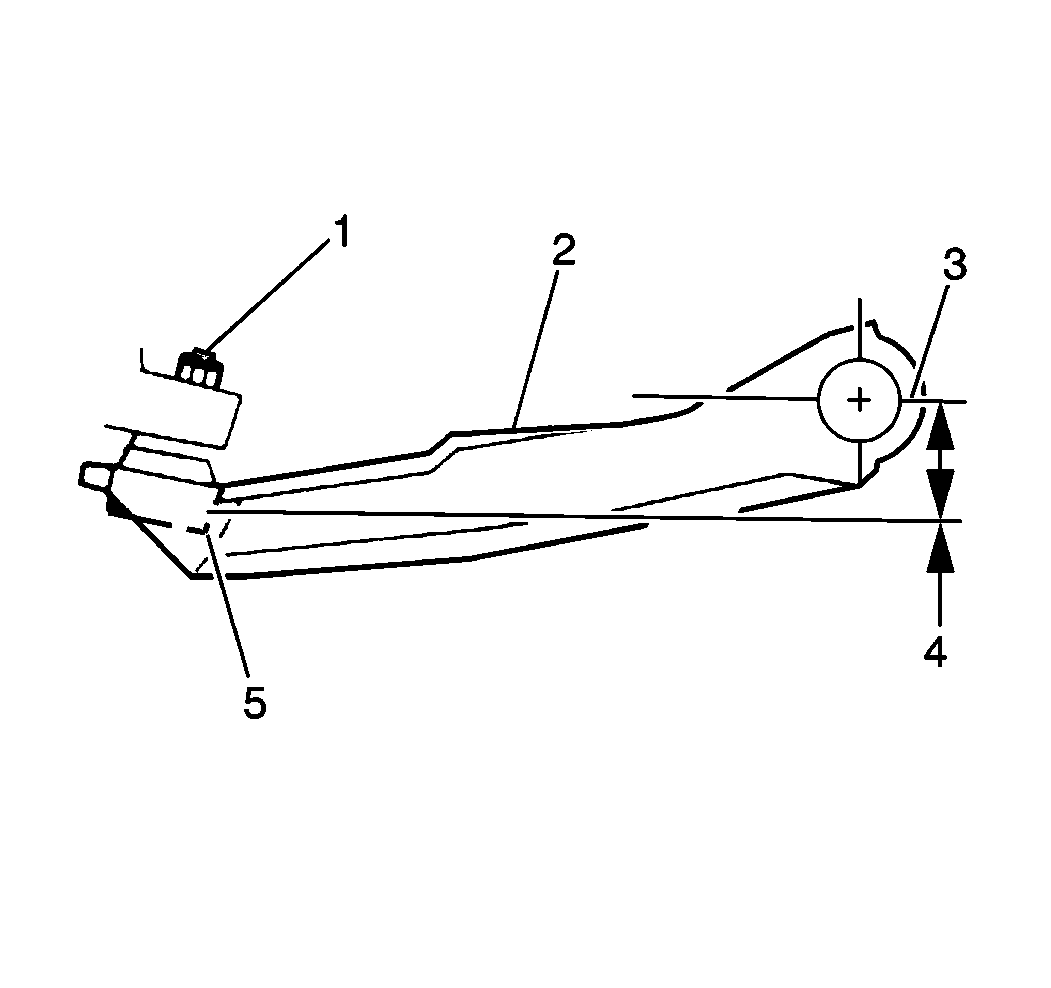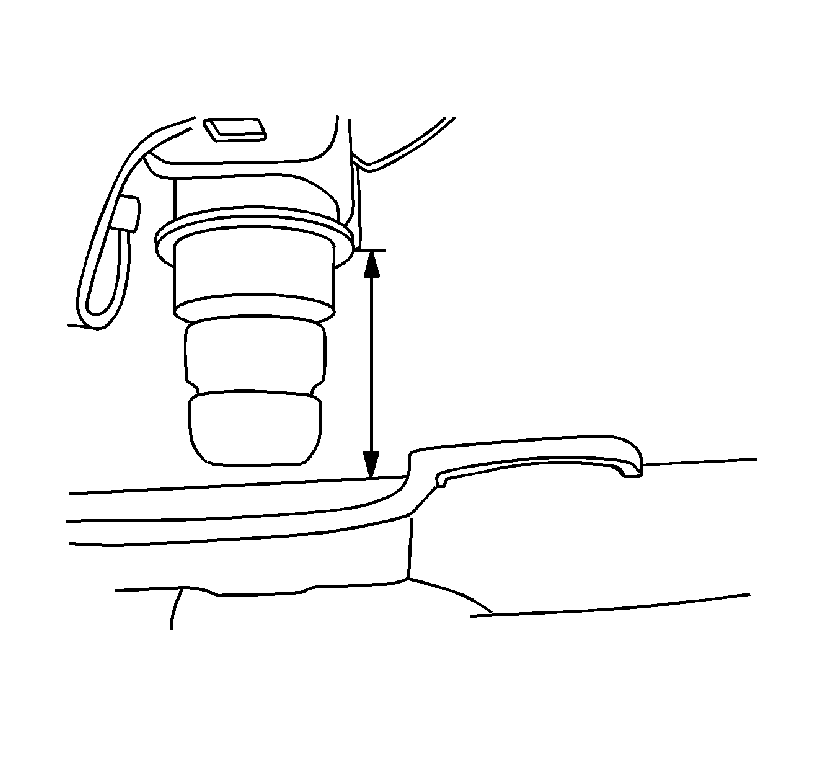Trim Height Measurements
Trim height is a predetermined measurement relating to vehicle ride height.
Incorrect trim heights can cause bottoming out over bumps, damage to suspension
components, and symptoms similar to wheel alignment problems. Check the trim
heights when diagnosing suspension concerns and before checking the wheel alignment.
Perform the following prior to measuring trim heights:
| • | Make sure the vehicle is on a level surface, such as an alignment rack. |
| • | Check the fuel level. Add additional weight if necessary to simulate a
full tank. |
| • | To ensure proper weight distribution make sure the rear storage compartment
is empty. |
| • | Close the doors and hood. |
Z Height Measurement
The Z height measurement determines the proper ride height for the front end
of the vehicle. Vehicles equipped with torsion bars use an adjusting arm to adjust
the Z height. Vehicles without torsion bars have no adjustment and may require
replacement of suspension components.
Important: All dimensions are measured vertical to the ground. Cross vehicle Z heights
should be within 24 mm (0.9 in).
- Place hands on the front bumper and jounce the front of the vehicle. Make
sure that there is at least 38 mm (1.5 in) of movement while jouncing.
- Allow the vehicle to settle into position.

- Measure from the pivot bolt center line
(3) down to the lower corner (5) of the lower ball joint (1) in order to obtain
the Z height measurement (4).
- Repeat the jouncing operation and measurement 2 more times for a total
of 3 times.
- Use the highest and lowest measurements to calculate the average height.
- The true Z height dimension number is the average of the high and the
low measurements. Refer to
Trim Height Specifications
.
- If these measurements are out of specifications, inspect for the following
conditions:
D Height Measurement
The D height measurement determines the proper ride height for the rear end
of the vehicle. There is no adjustment procedure. Repair may require replacement
of suspension components.
Important: All dimensions are measured vertical to the ground. Cross vehicle D heights
should be within 12 mm (0.5 in) for vehicles equipped with
coil springs, vehicles equipped with air suspension should be within 8 mm (0.3 in).
- Place hands on the rear bumper and jounce the rear of the vehicle. Make
sure that there is at least 38 mm (1.5 in) of movement while jouncing.
- Allow the vehicle to settle into position.

- Measure the D height by measuring the distance between the jounce bumper
bracket and the top of the rear axle tube.
- Repeat the jouncing operation and measurement 2 more times for a total
of 3 times.
- Use the highest and lowest measurements to calculate the average height.
- The true D height dimension is the average of the highest and lowest
measurements. Refer to
Trim Height Specifications
.
- If these measurements are out of specifications, inspect for the following
conditions:


